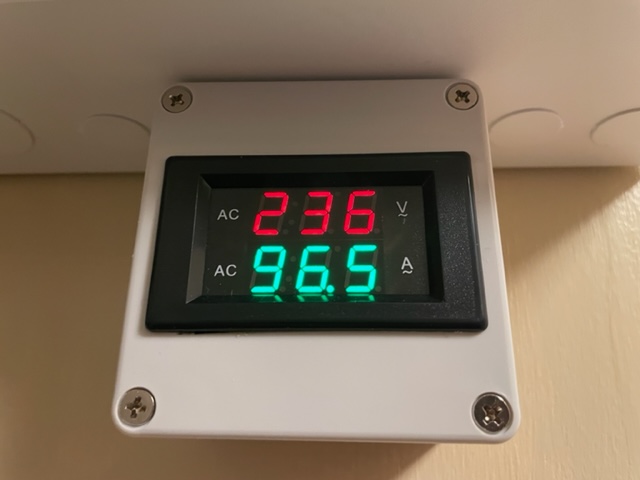Joeboy wrote: ↑Fri Sep 16, 2022 11:16 amWe will see.

AS long as your DNO has approved the storage heater load and the inverter/charger load then you are at least the right side of the rules if anything does go haywire, although quite how they could approve drawing way over the safe maximum for the supply I'm not sure. IIRC any high load kit needs approval and the DNOs can get a bit awkward about it. Our nearest neighbour has been doing battle with them over his hot tub that was partly installed this summer. The DNO are refusing to allow it to be connected as, like us, he has a car charger and PV. Daft thing is that if he'd installed the hot tub before the car charger he'd have been fine, as the DNOs are obliged to do a free upgrade for car charger installations I believe. Sadly the same isn't true for his hot tub. Last I heard they were insisting he get three phase run in to cope with the load.
Fintray wrote: ↑Fri Sep 16, 2022 11:21 am
I was simply stating that the main fuse wasn't going to blow at that load not that I was suggesting running at maximum fuse rating was ok. I'm sure most people on this forum would realise that running close to the main fuse limit is not a good thing.
Your post does show how little power there is available and the problems it would cause if everyone on your lane had EV's and heatpumps, not that they would all be on at the same time though. Wonder how things will work out when gas boilers stop being installed and heatpumps become more common and the DNO says there is not enough capacity in particular areas?
That was the thing that struck me when SSE sent me a copy of the map of the area showing their cables etc. Not only did the transformer rating seem far too small (although it is the largest pole mounted transformer available, apparently) but also some of the cables aren't that big, either. The 1930's built house on the hill behind us has overhead cables directly from the transformer, around 100m long at a guess, that are marked on the SSE map as being two wires that are 7 x 0.064" each which is about 16mm² and a fair bit thinner than the 25mm² sub-main cable I had to run in here to take power from the meter to the house (the meter is about 10m from the house consumer unit). I was told that 25mm² was the minimum acceptable cable size for this short run, so goodness only knows how SSE can get away with running a much smaller cable for around 100m.
The whole electricity distribution thing seems to be a bit of a shambles, at least in areas like this, where new houses have been built and just sort of tacked on to the existing infrastructure. The guys that ran our supply in said they had had a hell of a problem getting access to the connections on the transformer, as it had been sat up the top of its pole since some time in the 1960s and all the bolts were very rusty. These guys also reckoned that the cables running overhead up to the big house are the ones that were put in when that house was built, around 80 or 90 years ago.
The feeling I got from all the lengthy discussions I had with SSE was that they didn't really know much about the true loads on their network, and the guys actually doing the work were quite candid about how they kept recommending upgrades, whenever they came across ancient and overloaded equipment and how their head office never agreed to do the upgrades until the equipment actually failed. Planned maintenance seemed non-existent. One example the guys quoted was of an underground cable running along a nearby lane. They reckoned that cable had more joints than original cable, as the gutta percha insulation was breaking down all along its length, but rather than replace it they were just told to keep on repairing it. As a consequence the road surface is a nightmare, full of patches where its been dug up many times over the years.
25 off 250W Perlight solar panels, installed 2014, with a 6kW PowerOne inverter, about 6,000kWh/year generated
6 off Pylontech US3000C batteries, with a Sofar ME3000SP inverter


